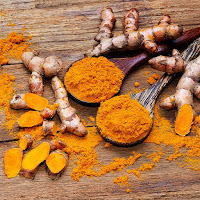 |
| Many older dogs suffer from joint pain. |
Not only are natural remedies often both more safe and as effective as traditional medical treatments, but they can also be much more affordable than traditional veterinary care. With the cost spaying or neutering, dog and puppy vaccinations, and regular vet check-ups, the medical costs for caring for a dog can be substantial.
Check out our list of natural herbs which can be used to treat pain in dogs:.
Licorice
Licorice is actually a type of legume, and it has long been used for its proven medicinal properties. One of its most popular uses is as a treatment for arthritis. There has been a lot of research which has observed that licorice acts as a highly effective anti-inflammatory agent.
For treating your dog, it's a good idea to use a tincture that has a low alcohol level. Otherwise, dogs may not be able to easily digest the licorice roots. Start by using 5 to 10 drops for each 10 pounds of your dog's weight, two times a day. You can also prepare a licorice root tea using about one teaspoon of licorice root for every one cup of water. If you use tea instead of a tincture, use about three times the dosage amount.
Ginger
Ginger is widely valued for its ability to treat disorders related to the digestive system. Many people regularly use ginger to relieving gas and nausea. However, ginger is also know to be able to reduce pain associated with arthritis. It accomplishes this by inhibiting the production of lukotrienes by the immune system. Lukotrienes cause inflammation in the body, which can exacerbate joint pain caused by arthritis. It also helps to stimulate blood flow and improve circulation. This can help olders dogs who have limited range of motion due to pain.
Start by getting a raw ginger root. Remove the skin from the root using a knife or peeler. Once it is pealed, mince the root. You can mix the ginger directly with your dog’s food. Use about one-quarter teaspoon for very small dogs, a half a teaspoon for medium-sized dogs, and three-fourths of teaspoon for dogs over 40 pounds.
Ginger can act as a blood thinner, so never give it to your dog before having surgery, or if your dog is taking any other blood-thnning medication. Ginger has also been known to decrease blood sugar levels and cause a drop in blood pressure. If your dog has any health conditions, consult with your veterinarian before giving them ginger.
Alfalfa
Alfalfa is a highly nutritious herb that has a myriad of health benefits. It is also an excellent natural treatment for arthritis. It is safe to take alfalfa on a daily basis over longer periods of time. It is especially useful for older dogs who may have sensitive digestive systems. You should try to use organic alfalfa, as it is often genetically modified or treated with pesticides.
Use a pinch of dried alfalfa for every 10 pounds your dog weighs every day. Simply mix the herb with their dog food. Never use alfalfa seeds. They contain l-canavanine, which is known to cause blood disorders. Alfalfa has been known to cause allergic reactions in dogs who have a sensitivity to pollen.
Yucca
The yucca root grows in very arid environments. Like many plants that are native to the desert, yucca provides a whole host of nutritional and health benefits. Yucca root contains steroidal saponins. These compounds have been proven to be effective at reducing pain and inflammation due to arthritis.ents.
It has been claimed by various veterinarins who favor natural treatments that the root is highly effective for treating osteoarthritis and rheumatoid arthritis in dogs.
Give yucca root to your dog daily for treating pain and inflammation. For every pound of food your dog eats, add about a half a teaspoon of powdered yucca. Also, you can give your dog a low-alcohol tincture. Give about one-sixteenth of teaspoon for every 10 pounds your dogs ways, daily. Also, yucca root is even more effective when used in combination with licorice or alfalfa.
Yucca has been known to cause problems with digestion if given for too long. Take a day or two off every week to give your dog's stomach a break and to reduce the chance of digestive problems.
Conclusion
Many people find that various alternative treatments and therapies work well for themselves. Often, these treatments are as effective as traditional medical treatments, and more safe as well. Why not do the same for our beloved dogs and other pets? Many people have had success treating their dogs not only with natural herbs, but also approaches such as using magnetic therapy for dogs and using crystal energy healing for dogs. We're always seeking out the best options for ourselves. Our dogs count on us to do the same for them.



